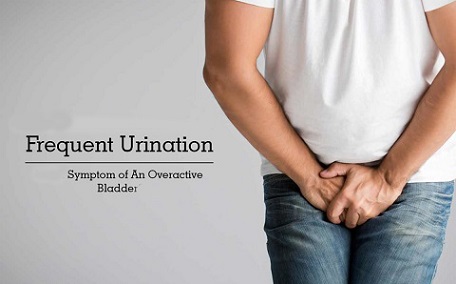COVID-19 News: Study Shows That Individuals With Prior SARS-CoV-2 Infections Tend To Develop Incidence Of New or Worsening Overactive Bladder!
COVID-19 News - Overactive Bladder (OAB) Feb 27, 2023 2 years, 9 months, 1 week, 2 days, 10 hours, 28 minutes ago
COVID-19 News: A new study by researchers from the Department of Urology, Oakland University William Beaumont School of Medicine, Beaumont Hospital-Royal Oak, Michigan-USA has found that individuals with prior SARS-CoV-2 infections tend to develop incidence of new or worsening overactive bladder!

Thailand Medical News in our previous
COVID-19 News coverages had already covered that SARS-CoV-2 infections can also lead to cystitis, overactive bladder (OAB) and other urinary issues.
https://www.thailandmedical.news/news/sars-cov-2-infections-can-also-lead-to-cystitis,-overactive-bladder-and-other-urinary-issues
The American study team aimed to to determine the incidence of COVID-19-associated cystitis or CAC and correlation with SARS-CoV-2 antibody levels.
They set up a retrospective study in which urinary symptoms were scored using the International Consultation on Incontinence Questionnaire-overactive bladder (ICIQ-OAB) at three time points: before the pandemic (January 2020), 2 months after COVID-19 infection (if applicable), and at the time of the study (May 2021).
The study setting was a regional health care system. The 18 785 healthcare employees who took part in the BLAST COVID study group were invited to participate, of whom 1895 responded.
The study outcome measured was the percentage of COVID-positive patients with a significant change on ICIQ-OAB over time. Pearson’s χ2 test was used for comparison of categorical data, and one-way analysis of variance for continuous data and multivariate analysis. A sample size of 618 was calculated for power of 80% and α = 0.05.
It was found that of the 1895 participants, 31.9% (n = 605) were positive for COVID-19 according to positive serology or a polymerase chain reaction (PCR) test. Of these, 492 were PCR-positive and had 2-mo post-infection data, with 36.4% (179/492) reporting an increase of ≥1 point on the ICIQ-OAB compared to baseline (before the pandemic), with de novo OAB in 22% of these cases (40/179).
Comparison of symptoms between baseline and the study time revealed that 27.4% (31/113) of those with positive serology only (asymptomatic COVID) and 37.8% (186/492) of those with PCR positivity (symptomatic COVID) had an increase of ≥1 point on the ICIQ-OAB, compared to 15.8% (n = 204) of uninfected patients, with odds ratios of 2.013 (95% confidence interval [CI] 1.294–3.138; p = 0.0015) and 3.236 (95% CI 2.548–4.080; p < 0.0001), respectively. The retrospective nature of the study and the volunteer sample are limitations.
The study findings showed that COVID-19 infection increases the risk of developing new or worsening Overactive Bladder (OAB)AB symptoms.
In fact, when comparing overactive bladder symptoms in a large group of participants between individuals with and without a previous COVID-19 infection, the study findings showed that symptomatic infection was associated with a three times greater risk of develo
ping new or worsening overactive bladder symptoms among COVID-19 patients.
The study findings were published in the peer reviewed journal: European Eurology Open Science.
https://www.sciencedirect.com/science/article/pii/S2666168322020389
It has been found that if SARS-CoV-2 affects a person’s urinary tract, they may need to urinate:
-more urgently
-more frequently
-at night, which may disturb their sleep
Also, in some cases, individuals have also reported passing blood or pus in their urine.
https://www.ncbi.nlm.nih.gov/pmc/articles/PMC9233460/
Lower urinary tract symptoms or LUTS do not always appear when a person has COVID-19. Some individuals develop them weeks or months after the infection is gone, as part of a condition known as long COVID.
https://www.ncbi.nlm.nih.gov/pmc/articles/PMC8597545/
The study findings demonstrate CAC incidence of 36.6% among individuals with previous symptomatic COVID-19 infection, which involved de novo OAB in 22% of these cases.
Importantly, symptomatic COVID infection was associated with a threefold greater risk of having worsening OAB symptoms in comparison to the COVID-negative cohort, while the risk was only doubled for those with asymptomatic COVID.
The average change in ICIQ-OAB score for our cohort was an increase of 6.5 points (121% increase) from baseline at the time of the study, with the greatest changes seen for frequency and urgency scores. Those who were COVID+ reported an average urinary frequency of 7–8 episodes/d, with urgency “occasionally” or “sometimes”.
However, the exact pathophysiology of CAC is yet to be discovered, although others have hypothesized that the increase in systemic inflammation on COVID-19 infection can lead to bladder inflammation and thus bothersome urinary symptoms.
https://www.sciencedirect.com/science/article/pii/S0306987720332667
Utilizing data from the BLAST COVID database, the largest COVID serology study to date, the study team found no correlation between SARS-CoV-2 antibody levels and OAB symptoms among patients with a prior COVID-19 infection. Because the serology data were obtained before vaccinations were approved and available for mass inoculation (December 2020), antibody ratios >1.1 were indicative of infection regardless of symptoms.
The study findings very clearly showed that patients with a prior COVID-19 infection are at greater risk of developing CAC/COVID-related LUTS, with an incidence of 36.6% for patients who had a symptomatic COVID infection.
For the latest
COVID-19 News, keep on logging to Thailand Medical News.
